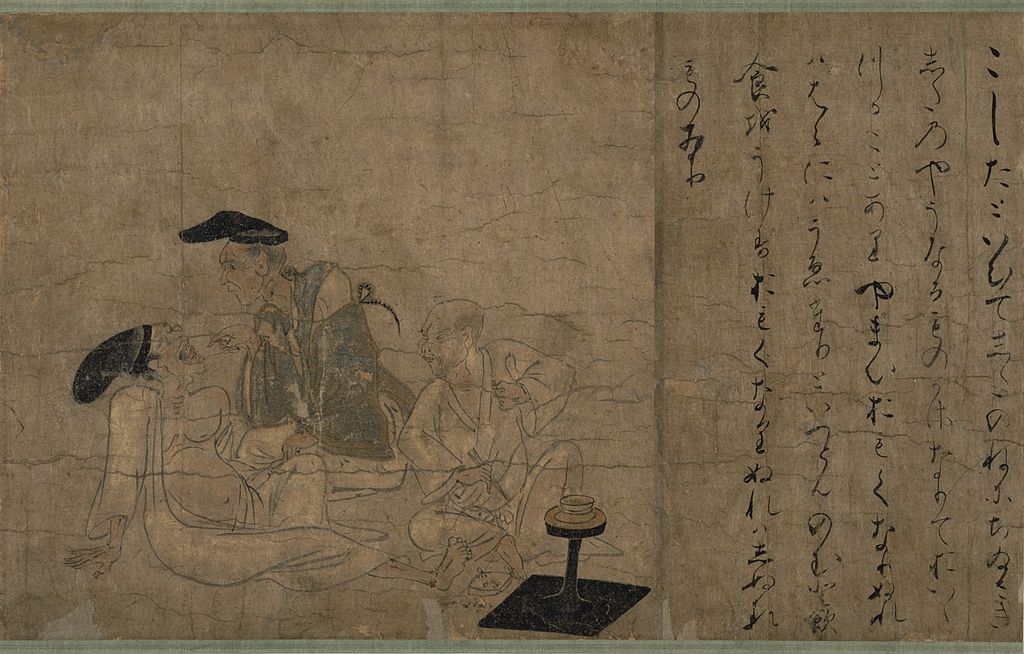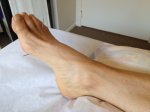Prevent and Treat
Common Cold and Flu
With Chinese Medicine
By Don Matesz, L.Ac.
Common cold and flu season is upon us. Few people know that Chinese medicine has powerful treatments for upper respiratory infections. In this article you will learn how to stay well during the flu and cold season using acupuncture, herbal medicine, and food therapy.
If you rush to get antibiotics whenever you get a cold or flue, the CDC has the following important message for you:

Note carefully that the text states "Using antibiotics for viruses can put you at risk for getting a bacterial infection that is resistant to antibiotic treatment." That's right, using antibiotics for a cold or flu or when there is no bacterial infection present may lead to contraction of a much more serious bacterial infection. In 2014 my 79 year old mother took antibiotics after a dental operation at the suggestion of her dentist and ended up with a gastrointestinal infection that caused her to have diarrhea for months. She did not get relief from the diarrhea until she took a special antibiotic that cost $150 per pill!
Wind and Evil Qi
Throughout history, China suffered many epidemics of infectious respiratory diseases. Two of the most famous Chinese medical classic texts discuss treatment of these diseases: the Shang Han Lun, or Treatise on Cold Damage, and the Wen Bing Xue, or Warm Disease Theory.
In Chinese medicine, the upper respiratory viral infections are classified as external wind invasions of evil qi. Chinese physicians called them wind invasions they knew that the pathogens that cause these infections are airborne, and because like the wind these infections come on suddenly without warning.
In addition, in all cases of wind invasion, people will experience an aversion to wind. Regardless of whether you have a cold or flu, you will dislike exposure to windy weather or drafts. According to Chinese medicine, this aversion to wind is a sign that the body has been invaded by wind.
If you feel more chilled than feverish, have a scratchy but not sore throat, desire hot beverages, and have cough, sneezing, lack of sweating, and neck and shoulder stiffness, along with clear or light white sputum, you have a wind-cold invasion. Sometimes in wind-cold one will also have light sweating that does not break the fever; this is due to weakness of one’s defensive qi. This pattern largely corresponds to the common cold.
If you feel more feverish than chilled, have a strong sore throat, are thirsty for cool beverages, and have swollen glands along with general body aches, little or no sweating, cough or sneezing, along with yellowish sputum, you have a wind-heat invasion. This pattern corresponds to the conventional diagnosis of flu.
If you neither chills nor fever predominate, and your throat is neither very sore nor very scratchy, and you have neither body aches and swollen glands or a mix of the two, and your sputum is sometimes clear, sometimes not, you have a wind invasion that is not yet clearly cold or heat.

Man with a Cold (Yamai no Soshi). Image Source: Wikimedia Commons
In the fall and winter, wind invasions generally manifest as either wind or wind-cold in the initial stages, then progress to either a wind-cold or wind-heat condition. We have noticed that individuals differ in their tendency to wind-cold or wind-heat. Some people tend to get wind-cold (scratchy throat, body aches, and chills greater than fever) and rarely if ever get wind-heat (sore throat, swollen glands, fever); while others tend to get wind-heat and rarely if ever get wind-cold. The propensity is affected by constitution, climate, and daily habits.
Wind conditions can also progress beyond these exterior syndromes. If the cold or heat pathogen is stronger than your defensive qi it can invade the lungs causing lung heat or lung cold, generally complicated by phlegm. The primary signs of lung invasion are chest discomfort combined with strong cough.
Acupuncture for Common Cold or Flu
Regular acupuncture keeps your immune system in top condition. During cold and flu season, we tend to needle every patient at a point called Zu San Li Stomach 36. This point has been shown to increase white blood cell counts. According to Chinese medicine, this point fortifies the body energy to ward off disease.
If you feel the wind invasion coming on, try to get to your acupuncturist quickly if you want to cut the common cold or flu short. Very early treatment can completely halt the invasion by expelling the wind and fortifying your defensive qi.
Once the cold or flu has taken hold, acupuncture and guasha treatment can reduce the duration of the infection and prevent it from going deeper into the lungs.
Chinese Herbs For Cold and Flu Season
We highly recommend that you keep a supply of Chinese herbs for treating the common cold or flu in your herbal medicine cabinet.
If you easily catch cold or have ongoing exposure to children or other carriers of wind pathogens, you will benefit from using Jade Windscreen Formula. Once I was consulted by a teacher who complained of catching common cold at least once a month during the school year due to exposure to kids. I advised her to start Jade Windscreen before the start of the year and take it continuously through the year. That year she did not catch a cold or flu.
The formula Gan Mao Ling can treat the very early stages of common cold or flu when neither cold nor heat signs are predominant. The name literally translates as “common cold effective remedy.” It treats early stage symptoms and provides relief for symptoms of common cold and flu such as sore throat, runny nose, nasal congestion, cough, and headache.
If you clearly have signs and symptoms of wind-cold with a run-down feeling, take Gui Zhi (Cinnamon Twig) decoction (tang) or pills (wan).
If you have a strong sore throat, thirst and/or a feverish feeling, the best remedy at the first sign is Yin Qiao Jie Du Pian (Honeysuckle and Forsythia Disperse Toxin Pill). This pill treats fever, mild aversion to wind, sore throat, headache, scant sweating or absence of sweating, coughing, oppression or pain in the chest, and mild thirst.
If you have a headache, you need a combination with Chuan Xiong Cha Tiao San. If you have nasal or sinus congestion, you will need a formula with Cang Er Zi (xanthium strumarium), such as Xanthium Nasal Formula, Bi Yan Pian or Pe Min Kan Wan both of which treat wind-heat nasal congestion.
If you have ear discomfort with alternating chills and fever, you will need Xiao Chai Hu Tang.
If you have wind-cold with gastrointestinal symptoms such as nausea, vomiting, or diarrhea, you will need Huo Xiang Zheng Qi Wan.
For dry cough or cough with sticky sputum, you can use Lo Han Kuo Beverage. If you have a cough with a strong sore throat, you can use Loquat & Frittilary Extract.
The above provides a sample of the large number of Chinese herbal medicine remedies aimed at treating the common cold or flu. We recommend that people at least keep Gan Mao Ling, Yin Qiao Jie Du Pian, and Gui Zhi Tang Wan on hand to treat the very early stages of common cold or flu.

Not this kind of swine flu. Image source: Wikimedia Commons
Stay Well!
During the common cold and flu season, be sure to eat well, exercise regularly, and get plenty of rest, as all of these actions keep your immune system in top shape.
Now seeing clients in person at:
The Retreat, LLC
7118 Summerfield Rd
Lambertville, MI 48144
Call To Make Appointment:
602-954-8016
Telemedicine:
602-954-8016
Acupuncture Toledo OH
Acupuncture Monroe MI
Recent Articles
-
Whole Foods Plant-Based Diet
Oct 02, 23 07:02 PM
Heal yourself with a whole foods plant-based diet. -
Acupuncture and Chinese Medicine | Lambertville MI, Toledo OH
Oct 02, 23 01:43 PM
Affordable acupuncture and Chinese medicine. Try Barefoot Acupuncture Clinic in Lamberville, MI. -
Regular acupuncture benefits rheumatoid arthritis patients.
Oct 31, 19 02:17 PM
A 2018 study published in Evidence Based Complementary and Alternative Medicine Journal found that clinical trials indicate that regular acupuncture over at least 3-12 weeks improves condition and qua… -
Acupuncture and herbal medicine reduce ringing in ears
Oct 30, 19 02:17 PM
"Acupuncture provides tinnitus relief. Luoding City Hospital of Traditional Chinese Medicine (Guangdong, China) researchers determined that acupuncture combined with the herbal formula Liu Wei Di Huan… -
Origin of "Barefoot Acupuncture"
Sep 28, 19 02:24 PM
Origin of "barefoot acupuncture" for our clinic name. -
Complementary facial rejuvenation session.
Sep 28, 19 01:35 PM
During the month of October 2019, receive a complementary facial rejuvenation treatment ($35 value) with any new patient or follow-up acupuncture treatment! Use this code to claim your free facial rej… -
Acupuncture as an alternative to opioids.
Sep 28, 19 01:29 PM
Conventional medical professionals have a growing interest in use of acupuncture instead of opioids for chronic pain. -
Acupuncture a 'Realistic Option' vs HRT for Hot Flashes
Apr 10, 19 01:50 PM
I have had many patients report less hot flashes with regular acupuncture. We also have Chinese herbal formulas that are very effective for controlling menopausal hot flashes and night sweats. Medscap… -
Chinese Herbal Medicine
Oct 31, 18 01:26 PM
Quality Chinese herbal medicine can help resolve a wide variety of conditions. -
Perception of Therapeutic Qi, a Nonmechanical, Nonpsychological Factor in Acupuncture That Originates from the Therapist
Oct 18, 18 05:00 PM
An interesting study indicates that people who have experience receiving acupuncture can distinguish between purely mechanical needling (no human contact with the needle) and human contact with the ne…

